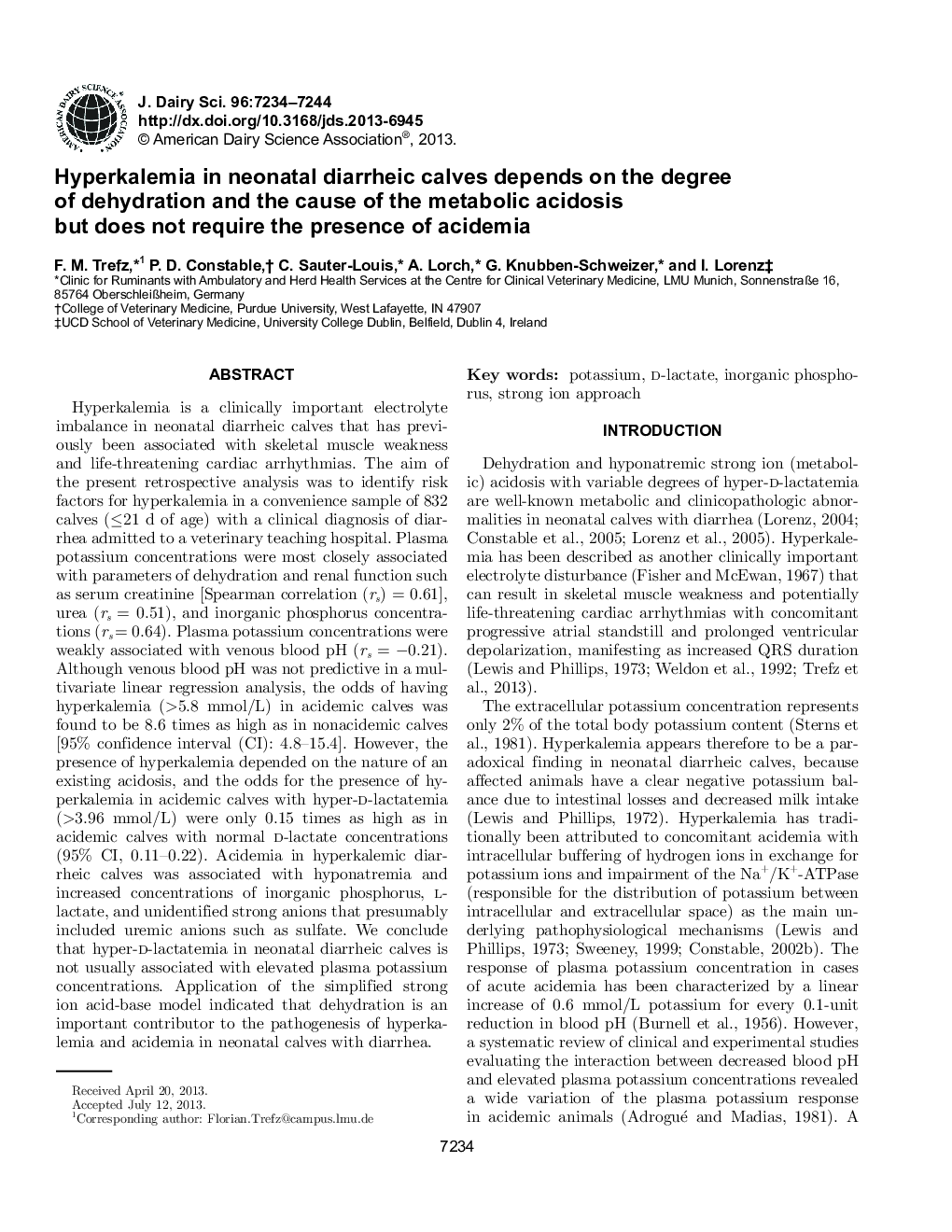| کد مقاله | کد نشریه | سال انتشار | مقاله انگلیسی | نسخه تمام متن |
|---|---|---|---|---|
| 10975058 | 1108030 | 2013 | 11 صفحه PDF | دانلود رایگان |
عنوان انگلیسی مقاله ISI
Hyperkalemia in neonatal diarrheic calves depends on the degree of dehydration and the cause of the metabolic acidosis but does not require the presence of acidemia
دانلود مقاله + سفارش ترجمه
دانلود مقاله ISI انگلیسی
رایگان برای ایرانیان
موضوعات مرتبط
علوم زیستی و بیوفناوری
علوم کشاورزی و بیولوژیک
علوم دامی و جانورشناسی
پیش نمایش صفحه اول مقاله

چکیده انگلیسی
Hyperkalemia is a clinically important electrolyte imbalance in neonatal diarrheic calves that has previously been associated with skeletal muscle weakness and life-threatening cardiac arrhythmias. The aim of the present retrospective analysis was to identify risk factors for hyperkalemia in a convenience sample of 832 calves (â¤21 d of age) with a clinical diagnosis of diarrhea admitted to a veterinary teaching hospital. Plasma potassium concentrations were most closely associated with parameters of dehydration and renal function such as serum creatinine [Spearman correlation (rs) = 0.61], urea (rs = 0.51), and inorganic phosphorus concentrations (rs = 0.64). Plasma potassium concentrations were weakly associated with venous blood pH (rs = â0.21). Although venous blood pH was not predictive in a multivariate linear regression analysis, the odds of having hyperkalemia (>5.8 mmol/L) in acidemic calves was found to be 8.6 times as high as in nonacidemic calves [95% confidence interval (CI): 4.8-15.4]. However, the presence of hyperkalemia depended on the nature of an existing acidosis, and the odds for the presence of hyperkalemia in acidemic calves with hyper-d-lactatemia (>3.96 mmol/L) were only 0.15 times as high as in acidemic calves with normal d-lactate concentrations (95% CI, 0.11-0.22). Acidemia in hyperkalemic diarrheic calves was associated with hyponatremia and increased concentrations of inorganic phosphorus, l-lactate, and unidentified strong anions that presumably included uremic anions such as sulfate. We conclude that hyper-d-lactatemia in neonatal diarrheic calves is not usually associated with elevated plasma potassium concentrations. Application of the simplified strong ion acid-base model indicated that dehydration is an important contributor to the pathogenesis of hyperkalemia and acidemia in neonatal calves with diarrhea.
ناشر
Database: Elsevier - ScienceDirect (ساینس دایرکت)
Journal: Journal of Dairy Science - Volume 96, Issue 11, November 2013, Pages 7234-7244
Journal: Journal of Dairy Science - Volume 96, Issue 11, November 2013, Pages 7234-7244
نویسندگان
F.M. Trefz, P.D. Constable, C. Sauter-Louis, A. Lorch, G. Knubben-Schweizer, I. Lorenz,